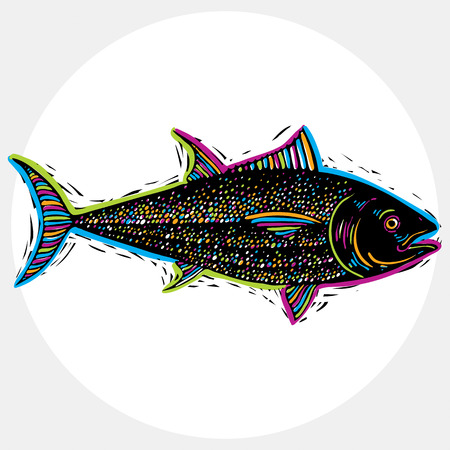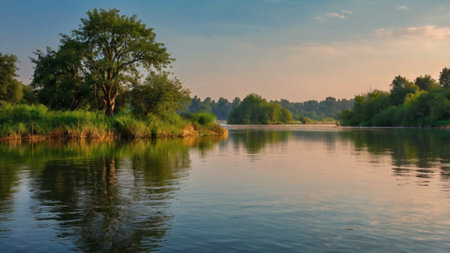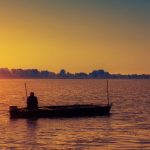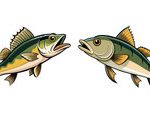1. Introduction to Urban Fly Fishing
Fly fishing is no longer just a quiet pastime reserved for remote mountain streams or rural rivers. In recent years, this classic outdoor activity has found new life in America’s urban landscapes. From the banks of the Chicago River to the tidal waters of Washington D.C., city dwellers are discovering the joys and challenges of fly fishing without ever leaving town.
What’s driving this trend? A mix of accessibility, curiosity, and a growing appreciation for urban nature. As more people seek local escapes and meaningful outdoor experiences, urban fly fishing has stepped into the spotlight as a unique way to connect with both nature and community.
The Rise in Popularity
Urban fly fishing is becoming increasingly popular among all age groups, particularly younger anglers who may not have the time or resources to travel far. With social media spotlighting scenic cityscapes and surprising catches, more people are picking up their rods and exploring waters close to home.
Reasons Behind the Growing Interest
| Factor | Description |
|---|---|
| Accessibility | Easy access to rivers, lakes, and streams within city limits makes it convenient for quick trips before or after work. |
| Affordability | No need for expensive travel or lodging; gear can be used locally with minimal extra cost. |
| Sustainability | Encourages local engagement with conservation efforts and reduces carbon footprint from long-distance travel. |
| Community | Local fly fishing clubs and events bring together diverse groups of people who share a love for the sport. |
How Urban Fly Fishing is Evolving
The tradition of fly fishing is adapting to modern city life. Instead of wading through backcountry streams, anglers might be casting lines beneath freeway overpasses or along renovated waterfronts. Urban fisheries are often home to bass, carp, trout, and even migratory species like shad or salmon, depending on the region. Fly fishers are also using more versatile gear suited for tight spaces and varying water conditions.
A Few Notable Examples:
- New York City: The Bronx River offers surprisingly good fishing for bass and panfish.
- Los Angeles: The LA River is gaining recognition as a viable spot for carp on the fly.
- Denver: Cherry Creek and South Platte River run right through town, offering trout within walking distance of downtown.
As urban fly fishing continues to grow, it reflects broader trends in outdoor recreation—where convenience meets passion, and where cities become unexpected gateways to nature. Whether youre a seasoned angler or just getting started, theres never been a better time to explore what your local waters have to offer.
2. Opportunities in City Waters
Fly fishing isnt just for remote rivers or mountain streams—urban America offers some unexpected and exciting opportunities for anglers. In fact, many city waters are home to a surprising variety of fish species, making them an ideal playground for fly fishing enthusiasts who live in the hustle and bustle of urban life.
Urban Waters, Diverse Species
You might be surprised to learn that urban lakes, rivers, canals, and even drainage ponds can host an impressive range of fish. From bass and bluegill to carp and even trout in cooler climates, these waters often support thriving ecosystems despite being surrounded by concrete and traffic.
| City | Common Fly Fishing Species |
|---|---|
| Chicago, IL | Smallmouth Bass, Carp, Panfish |
| Denver, CO | Rainbow Trout, Brown Trout |
| Atlanta, GA | Largemouth Bass, Bluegill |
| Seattle, WA | Cutthroat Trout, Coho Salmon |
| Austin, TX | Guadalupe Bass, Sunfish |
The Convenience Factor
One of the biggest advantages of urban fly fishing is accessibility. You don’t need to plan a weekend getaway or drive for hours—many city residents are just a short walk or bike ride away from decent fishing spots. That means you can squeeze in a quick session before work or unwind with your rod after a long day without leaving town.
Benefits of Urban Fly Fishing:
- Time-Saving: No need for long trips; fish close to home.
- Cost-Effective: Less gas and travel expenses.
- Mental Health Boost: A great way to de-stress amid the busy city life.
- Community Connection: Meet fellow local anglers and share tips.
Blending Hobby with Daily Life
The beauty of fly fishing in the city is how easily it fits into your routine. Whether it’s casting during your lunch break or planning weekend outings with friends at a nearby park pond, fly fishing becomes more than just a hobby—it becomes part of your lifestyle. It also gives you a deeper appreciation for your surroundings and encourages environmental stewardship right where you live.

3. Challenges of Urban Angling
Fly fishing in urban America offers unique thrills, but its not without its share of challenges. Unlike remote mountain streams or pristine rural rivers, city waters bring a different set of hurdles that anglers need to be aware of. Here’s a closer look at the main obstacles fly fishers face when casting their lines in urban settings.
Water Pollution
One of the biggest issues for urban fly fishing is water quality. Runoff from streets, industrial waste, and outdated sewer systems can all affect the health of local waterways. This not only impacts fish populations but also raises concerns about personal safety while wading or handling fish.
Common Urban Water Contaminants:
| Contaminant | Source | Impact on Fishing |
|---|---|---|
| Heavy Metals | Industrial runoff | Toxic to fish and humans |
| Sewage Overflow | Aging infrastructure | Reduces oxygen levels, affects fish health |
| Oil and Grease | Road runoff | Makes water unsafe for wading and wildlife |
Limited Access Points
Finding a spot to cast your line isn’t always easy in a city. Many urban rivers and lakes are surrounded by private property, commercial zones, or fenced-off areas. Even public spaces may have restrictions that limit fishing activities.
Access Challenges:
- No designated fishing zones near downtown areas
- Lack of parking or safe walkways to water bodies
- Overgrown or neglected banks making entry difficult
Safety Concerns
While fly fishing is generally a peaceful activity, doing it in an urban environment can bring unexpected risks. High foot traffic, crime rates in certain areas, and nighttime visibility all need to be considered before heading out.
Urban Safety Tips for Fly Fishers:
- Fish during daylight hours whenever possible
- Let someone know your location and expected return time
- Avoid secluded spots if youre unfamiliar with the area
- Keep valuables out of sight or leave them at home
Competition for Space
Cities are busy places, and public spaces are often shared among many different groups—joggers, dog walkers, cyclists, and picnickers. This can make it tough to find a quiet corner where you won’t interfere with others—or be interrupted yourself.
Shared Use Conflicts:
| User Group | Potential Conflict with Fly Fishing | Suggested Solution |
|---|---|---|
| Cyclists & Joggers | Narrow trails and paths may limit rod movement or backcasting space | Fish early morning when trails are less crowded |
| Paddleboarders & Kayakers | Create disturbances in shallow water areas where fish may hide | Select less trafficked water sections for fishing |
| Dog Walkers & Families | Noisy activities may scare fish away from shorelines | Choose spots farther from popular picnic or play areas |
Navigating these challenges takes patience and flexibility, but with the right knowledge and preparation, urban fly fishers can still enjoy rewarding experiences close to home.
4. Top Urban Fly Fishing Hotspots in the U.S.
Fly fishing doesn’t always require a trip to remote mountain streams or secluded backcountry rivers. Across the United States, many urban centers offer surprisingly good fly fishing opportunities right within or near city limits. Let’s take a look at some of the top urban fly fishing hotspots across the country, focusing on cities like Denver, Chicago, and Atlanta. These places combine accessibility with quality fishing experiences, making them perfect for anglers living in or visiting these metro areas.
Denver, Colorado
Denver is a paradise for urban fly anglers. Nestled near the Rocky Mountains, this city offers quick access to several productive waters.
| Waterbody | Target Species | Access Info |
|---|---|---|
| South Platte River (Denver South Platte – DSP) | Carp, Rainbow Trout, Brown Trout | Accessible through parks like Overland Pond Park and Confluence Park |
| Boulder Creek (nearby Boulder) | Brown Trout, Rainbow Trout | Easily accessed along Boulder Canyon Drive |
Chicago, Illinois
You might not think of Chicago as a fly fishing destination, but Lake Michigan and nearby rivers provide solid options for local anglers.
| Waterbody | Target Species | Access Info |
|---|---|---|
| Lagoons in Skokie and Lincoln Park | Largemouth Bass, Bluegill, Crappie | Public park access with shoreline casting spots |
| Kankakee River (about 60 miles south) | Smallmouth Bass, Pike | Kankakee River State Park offers multiple access points |
Atlanta, Georgia
The Atlanta metro area provides warmwater and tailwater trout fishing opportunities just a short drive from downtown.
| Waterbody | Target Species | Access Info |
|---|---|---|
| Chattahoochee River (below Buford Dam) | Rainbow Trout, Brown Trout | Ace Sand Bar and Jones Bridge Unit are popular public access points managed by the National Park Service |
| Piedmont Park Lake & other city ponds | Largemouth Bass, Sunfish | Centrally located with bank access; great for beginners or short after-work sessions |
A Few More Notable Cities Worth Mentioning:
- Austin, TX: The Colorado River and Lady Bird Lake are known for largemouth bass and carp on the fly.
- Pittsburgh, PA: Three rivers converge here—Allegheny, Monongahela, and Ohio—offering urban smallmouth bass action.
- Salt Lake City, UT: Close to Provo River and Weber River; both renowned trout fisheries.
TIPS FOR URBAN FLY FISHING SUCCESS:
- Tread Lightly: Many urban waterways are fragile ecosystems. Practice catch-and-release and avoid littering.
- Selective Presentation: Urban fish can be spooky. Use smaller flies and longer leaders in pressured areas.
- Tide & Flow Awareness: Especially important when fishing tidal zones or dam-influenced rivers.
If you’re living in or visiting one of these cities, don’t overlook your local water. Urban fly fishing is growing fast—and for good reason. With a little effort and research, you can find great fishing just minutes from your front door.
5. Tips and Gear for the Urban Fly Fisher
Urban fly fishing comes with its own set of challenges and rewards, and having the right approach can make a huge difference in your success and enjoyment. From gear selection to reading city waters and dealing with curious onlookers, heres what every city angler should know.
Choosing the Right Gear for City Waters
Urban environments often require a more compact, versatile setup. You might be fishing in tight spaces, near bridges, or among joggers in public parks. Here’s a quick breakdown of ideal gear for urban fly fishing:
| Gear | Recommendation | Why It Works |
|---|---|---|
| Rod | 7-8 ft 4-6 wt rod | Shorter rods are easier to maneuver in tight spots and under overhangs. |
| Reel | Lightweight reel with good drag system | You may hook into powerful carp or bass—be ready for a fight. |
| Line | Floating weight-forward line | Makes casting easier when space is limited; works well for topwater flies. |
| Tippet/Leader | 4X–6X fluorocarbon leader | Low visibility is key in often-clear urban water; strong enough for heavier fish. |
| Packs & Storage | Sling pack or chest pack | Keeps gear accessible and out of the way when walking through crowded areas. |
| Nets | Crumple-style or foldable net | Easily stored, quick to deploy when landing fish from piers or steep banks. |
Selecting Flies That Work in the City
You’ll encounter everything from stocked trout to opportunistic bass, bluegill, and even carp. Urban fish often feed on unconventional food sources like bread or insects near drainage pipes. Heres a list of go-to flies:
- Chernobyl Ants: Great visibility and floatation; mimic terrestrial bugs found near sidewalks and parks.
- Mop Flies: Resemble aquatic worms and attract less-pressured fish like carp.
- Bread Imitation Patterns: For areas where ducks are fed—carp love this stuff!
- Buggers & Streamers: Versatile choices for murky water; imitate baitfish and leeches.
- Nymphs (Hares Ear, Pheasant Tail): Work well below the surface in slow-moving creeks.
Reading Urban Water Like a Pro
Cities offer surprisingly diverse water conditions—from stormwater channels to ponded areas under freeways. Look for these urban features to find fish:
- Culverts and Drainage Outlets: These provide oxygen-rich water and attract baitfish—great ambush spots for predators.
- Pilings, Bridges, and Retaining Walls: Offer structure where bass, panfish, and carp can hide.
- Sewer Warm-Water Discharges: In winter months, these can hold active fish even during cold snaps.
- Pond Edges Near Vegetation: Ideal hangouts for sunfish and cruising carp.
Navigating Public Spaces While Fishing
You’ll likely share space with joggers, cyclists, dog walkers, and curious kids. Here’s how to keep things smooth:
- Be Visible but Respectful: Wear bright clothing so others see you casting; avoid blocking walkways or paths.
- Avoid Prime Recreation Times: Early mornings or weekdays are usually quieter at popular urban spots.
- Carry Trash Bags: Help clean up the area—even if it’s not yours. It earns respect from the community.
- Tactful Conversation: Be friendly if people ask questions. Its a great chance to educate others about conservation and responsible fishing.
Casting Techniques for Tight Spaces
The classic overhead cast isn’t always an option between buildings or beneath trees. Try these techniques instead:
- Roll Cast: Ideal when there’s no room behind you—just use the line already on the water to load your rod.
- Bow-and-Arrow Cast: Pull back your fly by hand and let it shoot forward—perfect under low bridges or dense foliage.
- Dapping: Let your fly dance on the surface with little casting—excellent for spooky fish in clear water.
- Shooting Line Casts: Great for getting distance without needing a full backcast range; useful along waterfront railings or boardwalks.
The urban landscape may seem unlikely as a fly fishing destination, but with the right mindset—and gear—youll discover some incredible angling opportunities hiding in plain sight. Stay prepared, stay respectful of your surroundings, and enjoy exploring America’s concrete streams and hidden ponds one cast at a time.


